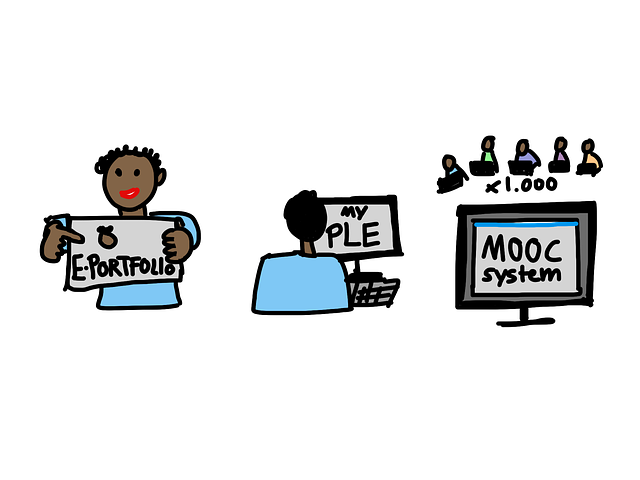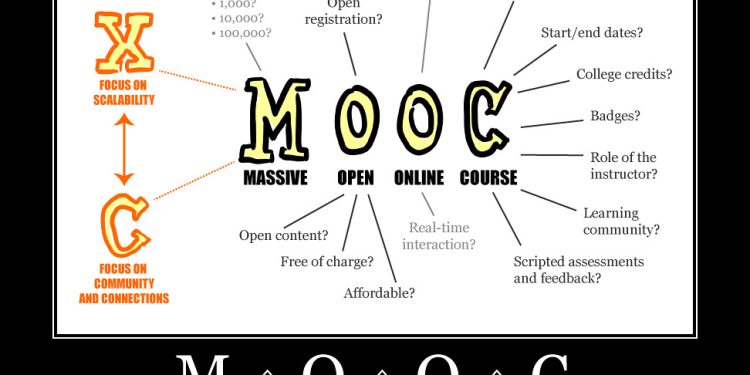In the vibrant amphitheater of global learning, a new contender has emerged, sleekly parading into the arena with a swagger that nods to the future of education. Massive Open Online Courses, or MOOCs, as they’ve been fittingly christened, are clutching the reigns of the e-learning revolution, offering a cornucopia of courses across disciplines, breaking the ivory towers of conventional education. Yet, like every prodigal trailblazer, MOOCs too aren’t without their share of pitfalls. This article unwraps the digital enigma that MOOCs are, dissecting their sweeping allure, whilst shining a cautious spotlight on the lurking challenges they hold. Fasten your seatbelts, dear readers, as we embark on this exhilarating journey to comprehend the double-edged phenomenon of MOOCs.
For many, the term MOOC - Massive Open Online Course – remains a mystery. It conjures notions of daunting digital classrooms filled with faceless, far-flung academics. Yet, to unravel this enigma is to expose the potential of an incredible, democratized education avenue. Benefiting learners and educators alike, MOOCs offer unique advantages, such as flexible learning timelines, self-paced study, widespread access, as well as networking opportunities with learners from across the globe. From Harvard to your home, the world of knowledge becomes accessible, enabling you to learn from experts without geographical limitations. Greater course diversity, cost-effectiveness, and adaptability to various learning styles further strengthen MOOC’s appeal.
However, MOOCs do not come without their unique set of challenges. Traditional classroom dynamics get disrupted here, with participant engagement becoming voluntary. While this freedom is a boon for mature learners, it can be a bane for others, potentially leading to decreased motivation and low course completion rates. Equally vital, the impersonal ‘one-size-fits-all’ teaching model often adopted in MOOCs can create confusion, as participants scramble to assimilate and apply abstract course concepts. Issues related to course quality, credibility, and assessment integrity pose additional challenges for both course providers and learners.
Despite these hurdles, with strategic navigation, completing a MOOC can be a fulfilling journey. Strategies include setting clear, achievable goals, committing to a regular study schedule, actively engaging through forums, and quickly seeking help when course concepts seem unclear. Remember, the key to conquering this learning curve is consistent, focused effort, combined with a zest for learning.
Unravelling the labyrinth of MOOCs has been quite an adventure that we’ve embarked on together. We’ve watched as education, hand in hand with technology, took leaps forward that only the bravest could have foreseen. We’ve traipsed through the abundant gardens of knowledge that these online courses have provided and looked honestly at the hurdles they present. Indeed, the world of MOOCs is a marvelous tapestry of opportunities and challenges that continues to evolve as we speak.
This is not the end, but merely just the beginning of our exploration of MOOCs. As we take our leave, let’s ponder the bigger picture – a world where quality education knows no boundaries, a world where a humble click invites you to delve into unexplored realms of understanding. The challenges involved in this grand vision are numerous and complex, but they stand as guardians of an opportunity that’s worth every effort.
Let’s continue picking apart the pieces, understanding the intricacies, and celebrating the triumphs of these majestic giants of education. Today, we’ve woven a tapestry of understanding around MOOCs, a pattern of knowledge that, when shared, extends the massive, open, online reach of these courses. Remember, every thread of understanding woven, adds to the grand design. The age of MOOCs has dawned, and through the mists of challenge and with the light of opportunity, we march on, explorers in the vast, expanding world of online education.






